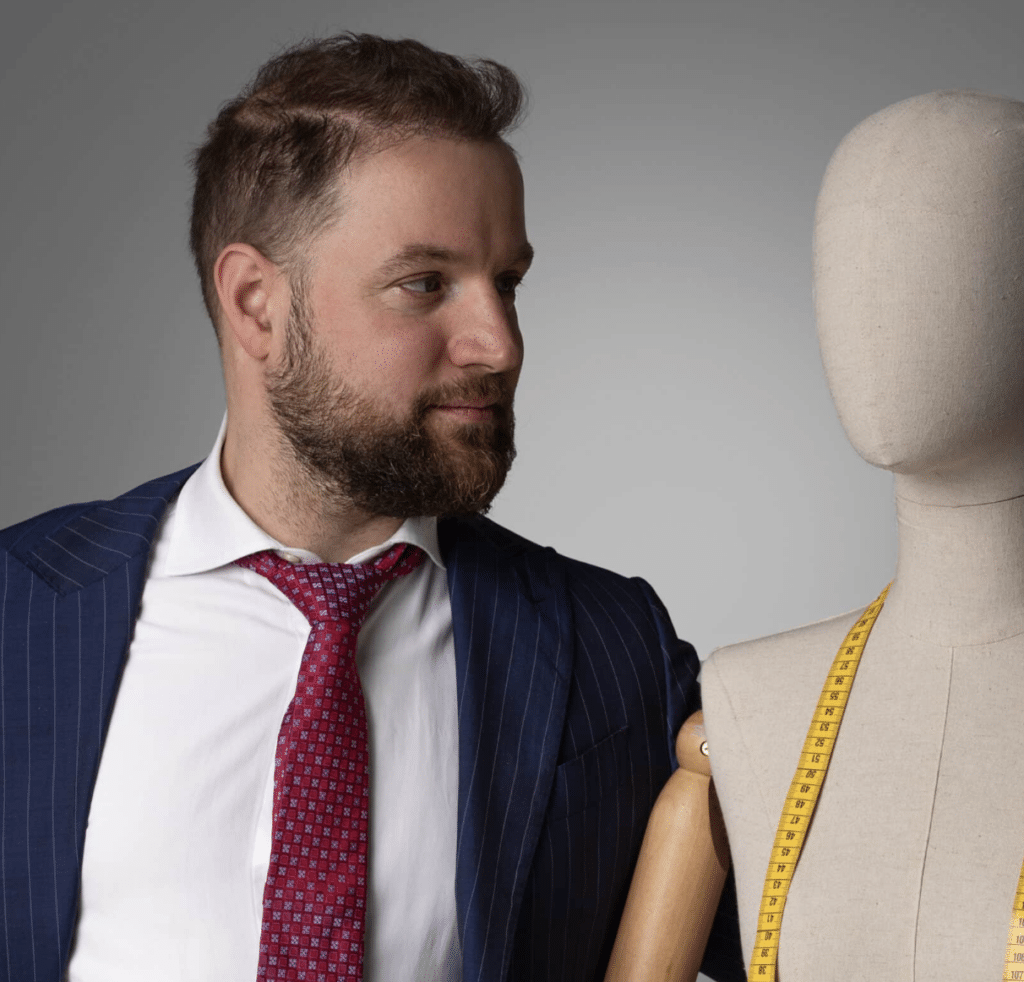Imagine a garment capable of crossing centuries, social classes and even continents. You can see it worn by a rebellious teenager, by a French designer in her atelier, by an actor on a red carpet and by an underground artist on a metropolitan night. It is a chief democratbut at the same time exclusive. It has a history, it is laced with experiences and reinventions. We are talking, of course, about jeans, which are not just a simple garment but a real cultural symbolan icon that constantly reinvents itself without ever losing its original spirit.
But who really invented jeans? And what is the real history of this garment, from its humble beginnings to the catwalks? For a young creative like you who is ready to shape the future of fashion, getting to know the denim past is the first step towards reinventing it.
Where jeans originated: from European roots to the American myth
Contrary to what many people think, the history of jeans does not begin in the dusty American prairies, with cowboys on horseback and gold prospectors looking for their fortune. No, its origins go back much furtherin a Europe of workshops, rolls of rough cloth and skilled hands that wove out of necessity rather than vanity.
Jeans were born at a time when the fabric was still a matter of survivalmore than aesthetics: what mattered was strength, functionality and durability. A Nîmesin the south of France, in the 17th century the "serge de Nîmesa strong and tough fabric, designed to withstand the wear and tear of time and labour. That fabric, which initially seemed destined only for a life of toil, would soon become the famous "denim"named after his home town.
Meanwhile, on the Italian coast, in Genoasailors wear solid trousers made of indigo blue canvas. Practical and salt- and water-resistantthese trousers became part of their daily equipment. The name of the city, "Gênes' in French, turns into 'jeans", and from there another part of the story begins.
So where did jeans originate? In two cities apparently far apart, but deeply connected by the European craft genius and by a concrete vision of dressing. From Nîmes and Genoa comes the first pulse of life for denim: a blue thread that weaves utility and intuition, tradition and innovation, giving rise to a myth that will cross oceans and centuries, ready to turn into the style icon we all know today.
Levi Strauss and Jacob Davis: the inventors of modern jeans
The spark that transformed the jeans from a simple workwear garment to a global icon ignited in the New World. We are in Californiain 1873. Gold shines in the dreams of thousands of men, but the reality is calloused hands, bodies bent by fatigue and clothes that wear out quickly.
It is in this raw context full of expectations that two figures meet and change the history of fashion forever. Levi Strauss, a bold and visionary entrepreneur, arrives from Bavaria with a load of hopes and rolls of tough fabric: denim. It is not yet a household name, but it has the eye to recognise what is needed for that new frontier in ferment. On the other side is Jacob Davis, a practical and brilliant tailorwith a functionality-oriented mind. It is he who makes the insight that makes the difference: reinforcing with small metal rivets the critical points of work trousers, those that tear day after day from pressure and wear. That combination, the strength of denim and the precision of tailoringturns out to be revolutionary.
The two design the productofficially patent the idea, and so the first modern jeans are born. A creation designed to last, created to responding to a concrete needyet unknowingly destined to become something much bigger. The beauty? Neither of them really imagines theimpact that those rough trousers, sewn for those who work hard under the sun, will have on future generations. They do not yet know that the denim will become a languagea symbol, an instrument of expression.
So, who invented jeans? Two men, certainly. But also two kindred spirits, two intertwined stories, two worlds: the Europe of artisanal roots and the America of dreams, united by the desire to create something that would stand the test of time. And they succeeded, better than anyone else.
The history of jeans: from workwear to style symbol
Jeans have never been in a hurry. They were born, not in the spotlight and never sought glamour. They waited, patiently, for the the right time to get noticedsilent but determined, strong in their authenticity. After wrapping tired bodies and earth-stained hands, after accompanying the toil of workers, miners and pioneers of the American dream, denim began its slow but unstoppable cultural metamorphosis.
It is the cinema to offer him the first real stage and to allow the brand to have a true identity. In the 1950s, icons such as Marlon Brando and James Dean wear them with a natural swagger. They are not just trousers: they are real statements. Those skinny jeansexperienced, carried with a wild confidence, become a silent cry of rebellion. They represent pure youth. They are nonconformity sewn in. And the world watches them, desires them and imitates them with devotion.
In the 1960s and 1970s, the cultural revolution embraced them. Jeans become symbol of dissent. Hippies dye them in the colours of freedom, tear them up in anger and decorate them with dreams: flowers, writing, symbols of peace. Every tear is a protestevery seam a hope. They are theuniform of visionariesof those who reject war and seek new worlds, both inner and collective.
Then came the 1980s, and with them the cult of the image. Jeans become sensual, sculpt the body and shine under club lights. They adapt to the skin like a second identityThey emphasise curves, slender figures and become objects of desire. They are pure hedonism, visual power, a true fashion statement.
And in the end, the 1990s bring us back down to earth, freeing us from frills and bringing us back to reality. Jeans become baggydiscoloured and worn with a specific purpose. The grunge aesthetic embraces them with a certain disenchantment: they become symbols of authenticity, of a relaxed styleof a youth that rejects glitter to embrace the real, even when it is imperfect.
In every decade, jeans tell deep stories. They are not just a garment: they are a voice that changes tone but never stops expressing itself. The wearer becomes the spokesman for a generationof an emotion, of an era. They are like a diary stitched on canvas, where everyone writes their own story. And therein lies their timeless power.
The evolution of denim: fashions, subcultures and revolutions
By now we know, denim has always had a special talent: that of reinventing itself over time while remaining true to itself. It is a material that knows how to change its appearance, adapting to the times, fashions and cultural contexts, without ever losing its distinctive character.
It has crossed epochs, trends and aesthetic revolutionsevolving naturally, almost gracefully. From paw-paw models from the 1970sas broad and fluctuating as the utopias of that period, to the daring skinnies from the early 2000stapered like the urban imagery that inspired them. From the faded tones of stonewashed to the raw and decisive rigour of raw denim. From creative patchwork and playful to precision laser print graphics. Denim has spoken all the languages of fashionHe moved with ease from luxury tailoring to the everyday wardrobe. It was underground and sophisticatedpopular and collectible, the protagonist of catwalks and streets, male and female, to the point of blurring all definitions. It has become a neutral ground where the identities can be written, erased and rewritten.
And it is precisely in the folds of subcultures that jeans have often found their most authentic breath. Punks have ripped it to sew on a declaration of war on the system. Skateboarders took him to the limit, consumed in rapid movements and falls. Rappers celebrated him in oversize versionraw and flashy. Club kids turned it into theatrical costumeas the catwalks reshaped it into unprecedented, architectural and couture silhouettes. Everyone has taken this fabric and adapted it to their own vision, making it a second skinan extension of its own aesthetic language.
And today? Today denim is experiencing a new and fascinating season. A season characterised by awareness, experimentation and new responsibilities. It regenerates with sustainable fibres, reinvents itself with a view to brand zero-wasteand is modelled through digital processes and three-dimensional cuts. It is deconstructed, reworked and reinterpreted. Yet, despite all these innovations, it still retains the same rough and authentic spirit than when it all began. Because denim does not need to change its soul to remain relevant: it just needs to change its shape.
Jeans today: the most popular garment in the fashion world
Today, jeans are not just a simple garment: they represent theevolution of an ideaa symbol, a creative gesture. They are the ideal starting point for those who wish telling stories through fashionfor those seeking a language that manages to be both authentic and sophisticated.
We know how today every detail communicates something and how every choice reflects our identity, which is why denim has established itself as one of the more powerful expressions of style and meaning. It is not just fabric, but memory. It is not just fit, but a vision. Wearing a pair of jeans today means rewriting a piece of history, sewing a thought into it, giving life to a personal aesthetic that feeds on the past but looks resolutely to the future.
And for young creatives who want to launch themselves into the world of fashion with an educated and international outlook, denim is a terrain to be exploredto be deconstructed and reinvented with intelligence, taste and an ethical sensibility. If you feel the urge within you to create something unique, to giving concrete form to your aesthetic vision and turn it into an authentic, consistent and recognisable brand, then now is the right time. Be A Designer is the consultancy service designed to help you build your fashion brand from the ground updefine your stylistic identity, position yourself on the market and launch your project in a professional, strategic and distinctive manner. Because every great idea needs a solid structure to become reality, just like a pair of jeans needs strong seams to stand the test of time.
And if jeans teach us anything, it's that even the simplest ideas can be successful if driven with vision and passion, can write history. Today, that potential is in your hands! But you don't have to go through this journey alone. With Be A Designer, you have experts at your side to guide you every step of the way. creating your fashion brand. From the definition of your stylistic identity to collection development, from market positioning to the launch of your brand, you will have access to concrete, customised and strategic services designed to turning your creative dream into a solid projectrecognisable and competitive. Because every icon, just like jeans, had a beginning. And yours can begin now!
Contact us for a personalised consultation and start building your brand: with the right tools, the talent inside you can really make a difference!
















